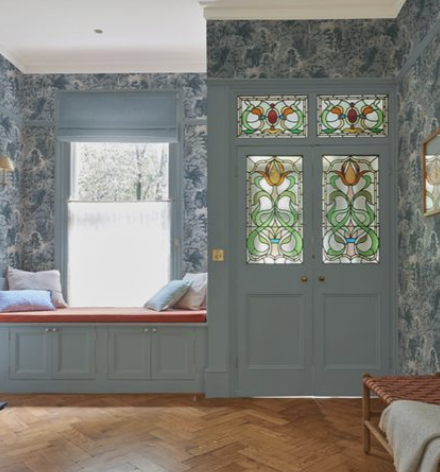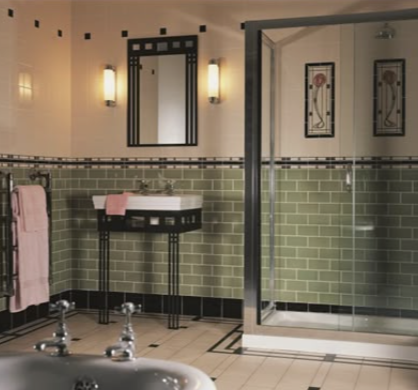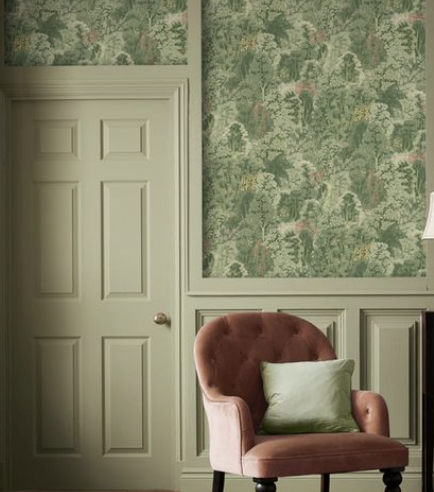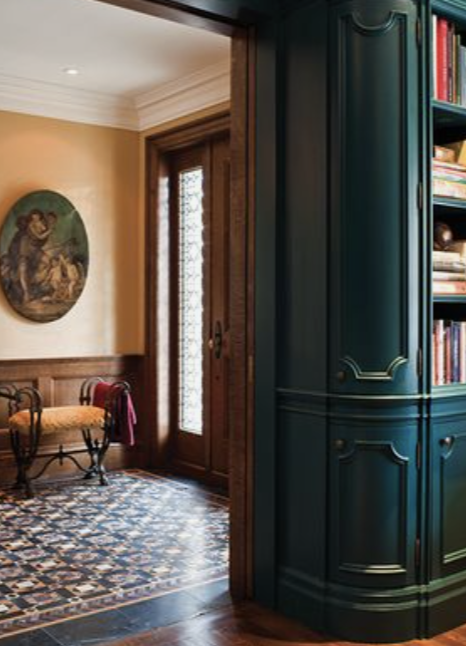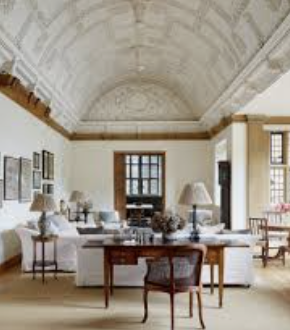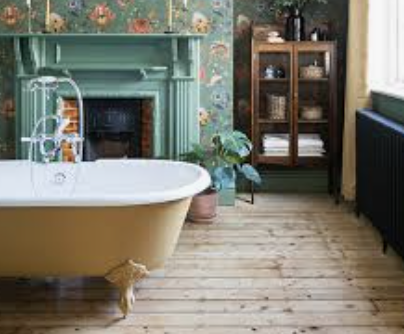GUIDE TO EDWARDIAN RENOVATIONS
History and Style of Edwardian Houses
The Edwardian period started during the reign of King Edward VII (1901–1910) and continued into the early 1920s. The style of Edwardian homes marked a departure from the ornate and heavy Victorian era, embracing a lighter, more spacious, and refined aesthetic. Influenced by the Arts and Crafts movement, Edwardian architecture focused on craftsmanship, simplicity, and the use of high-quality materials.
William Morris characterised the Edwardian aesthetic with his focus on craftsmanship and quality, and designs inspired by nature. Morris famously said “have nothing in your house that you do not know to be useful or believe to be beautiful” a real shift from the fussiness of victorian homes.
Edwardian houses are characterised by:
Red brick facades with decorative stone or timber accents, half pebbledash treatment and mock timber. Exterior Brick work used in a decorative way.
Bay windows that allow for more natural light, bay windows could be square or rounded.
Large, airy rooms with high ceilings, often wider than Victorian houses.
Patterned tile pathways leading to front doors.
Ornate wooden porches and stained-glass features.
Wide hallways and spacious layouts, often incorporating grand staircases.
Decorative cornices and mouldings, but less intricate than Victorian styles.
Fireplaces in most rooms, often with wooden or tiled surrounds.
Renovation Tips
When renovating an Edwardian house, it is essential to preserve its historical features while updating it for modern living. Here are some key considerations:
Restoring Period Features
Windows & Doors: Retain original sash windows and wooden doors, or replace with sympathetic replicas. Replace of repair any window shutters. Add well designed glazing to future proof and update the house to current building eco standards.
Fireplaces: Restore original fireplaces or install period-appropriate reproductions.
Flooring: Preserve original wooden floorboards or install reclaimed timber flooring.
Plasterwork, Cornices, picture and Dado rails: Repair decorative mouldings and ceiling roses to maintain the house’s character. Reinstate or repair Dado and picture rails for an authentic period look.
Paint Colours: Paint company's worth considering are Little Greene, which have paint specific to several eras. Farrow and Ball, many of their colours have been recreated to match heritage colours. Also Edward Bulmer Natural Paints have period appropriate colours. All of these companies have guides to using their paint in period properties online.
Enhancing Natural Light
Edwardian homes often have large windows, but some spaces can still feel dark. Consider:
Adding roof lights or skylights to increase natural light.
Installing glass doors to open up spaces without losing period charm.
Modern Comforts with Period Charm
Kitchen Extensions: Create an open-plan space while using materials like wood and stone to blend with original features.
Bathroom Updates: Incorporate roll-top baths, traditional-style sinks, and period-style tiling.
Energy Efficiency: Upgrade insulation, add solar panels and install secondary glazing to improve thermal efficiency without altering original windows.
Room-by-Room Renovation Guide
Hallways & Entrances
Edwardian hallways are typically wide and inviting, often featuring Encaustic tiled floors and wooden paneling.
Flooring: Restore original patterned tiles or install period-style alternatives.
Colour Palette: Soft greys, muted blues, or sage greens to maintain a classic feel.
Lighting: Statement chandler or period-style wall sconces.
Doors & Windows: Retain stained glass if present, or introduce period-style replicas.
Panelling: Repair or install panels to add character and design interest to the hallway.
Furniture: Console table, a statement chair, artworks and mirrors to add interest to the space.
Living Rooms
These rooms are often spacious with decorative fireplaces and large bay windows.
Colour Palette: Warm neutrals, soft creams, muted pinks heritage greens or green blues.
Fireplace: Restore original fireplaces or opt for cast-iron or tiled period-style fireplaces.
Ceilings: Retain or restore decorative mouldings, cornice and ceiling roses.
Lighting: A central dimmable Chandelier, wall sconces and table Lamps will give a good mix of flattering lighting.
Flooring: Restore or replace wooden floorboards. Add hand knotted Wool rugs for a cosy atmosphere.
Furniture: Mix antique and modern pieces for a balanced look. Key accessories are artworks, books, mirrors and carefully chosen ceramics and glassware.
Storage: Built in bookshelves with cupboards.
Soft Furnishings: Curtains, blinds and cushions will elevate the room.
Dining Rooms
Many Edwardian homes have separate dining rooms, which can be made functional while preserving historical charm.
Colour Palette: Deep reds, navy blues, or warm ochres to create a sophisticated atmosphere.
Flooring: Restore wooden floors and add a oriental rug for warmth.
Lighting: Chandeliers or period-style wall lights add a sense of grandeur.
Fireplace & Storage: Incorporate built-in cabinetry or sideboards for storage.
Curtains or blinds: Set the tone with an interesting window treatment.
Furniture: Oak arts and Crafts style table and chairs antique would be best for authenticity.
Kitchens
While Edwardian kitchens were often small and utilitarian, modern renovations can blend classic elements with contemporary convenience.
Colour Palette: Creams, pastel greens, or duck-egg/pastel blue for a fresh look.
Cabinetry: Shaker-style units, The “ In frame” style is appropriate with brass or ceramic handles.
Worktops: Butcher block or marble look granite for a traditional yet stylish feel.
Lighting: Pendant lights over workspaces or a central chandelier.
Flooring: Restore stone or wooden floors.
Furniture: Instead of an Island consider a wooden rustic style farmhouse table with bench seating or antique chairs.
Window treatments: Roman blinds work well and help to soften the space
Bedrooms
Edwardian bedrooms are typically spacious and can be styled elegantly while maintaining period features.
Colour Palette: Soft lavenders, dusky pinks, or light blues for a tranquil ambiance.
Wallpaper: Botanical and floral wallpaper.
Flooring: Wooden floors with plush rugs for added comfort.
Windows: Retain sash windows with period-appropriate curtains or shutters.
Wardrobes: Built-in storage with paneling to match Edwardian aesthetics.
Furniture: Cast Iron or Upholstered beds, upholstered arm chair, chest of draws, bedside tables antique pieces work well here.
Lighting: A small chandelier, table lamps, wall lights.
Window Treatment: Curtains if the windows are large, otherwise use
roman blinds.
Accessories: Cushions, Mirrors artworks.
Bathrooms
Traditional Edwardian bathrooms often featured freestanding baths and detailed tiling.
Colour Palette: White with black accents, soft pastels, or navy with brass fittings.
Fixtures: Roll-top baths, pedestal sinks, and high-level cistern toilets.
Flooring & Tiles: Black and white checkered tiles or period-style ceramic tiles.
Accessories: Vintage mirrors, traditional towel rails, and wall-mounted lighting.
Conclusion
Renovating an Edwardian home means preserving period features while making thoughtful updates, you can maintain the character and elegance of the home while enhancing its comfort and functionality. A carefully chosen colour palette and period-appropriate furnishings mixed with some modern pieces can bring out the character of each room while ensuring the space remains practical for contemporary living.






